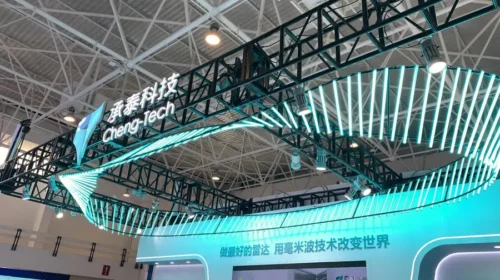Government Environmental Priorities Put the Heat on Datacenter Operators

Recently-listed Chinadata looks most advanced among China’s top three independent operators in heeding calls to reduce carbon emissions
Key Takeaways
- GDS Holdings remains the market leader among China’s major independent datacenter operators
- Chinadata could be best positioned to respond government carbon-reduction demands that could radically alter land-use and operating-efficiency strategies
By Eric Auchard
A major shift is shaping up in the real-world land grab by China’s major datacenter operators.
While they may seem techy, datacenter operators have much in common with property developers: Their strategy boils down to buying up strategically located land near major customers, building huge warehouses and then stuffing them with thousands of climate-controlled, refrigerator-sized boxes of computers. Such centers then power messaging, ecommerce and other online services for clients big and small as the balance of China’s economy shifts to the internet.
Increasingly, non-financial considerations related to environmental protection are becoming an important and differentiating factor for these datacenter operators, whose facilities consume huge amounts of power and generate large amounts of heat. In that regard, the smallest of the country’s top three independent operators, Chinadata (Nasdaq: CD), may be emerging as an industry leader by focusing most on power consumption patterns compared with its rivals.
The two-decade-old GDS Holdings (Nasdaq: GDS) is China’s sector leader by most metrics, ahead of both Chindata and the similar-sized 21Vianet (Nasdaq: VNET).
GDS recently reported its annual revenue rose 39.2% last year to 5.74 billion yuan ($879.5 million), while 21Vianet said its revenue grew 27.4% to 4.8 billion yuan. Chindata also reported last week its revenue more than doubled to 1.8 billion yuan last year. Still, the value of 21Vianet and Chindata combined is less than GDS’s $15 billion stock market capitalization.
All three are benefiting from soaring demand from China’s biggest big tech players, as well as government, financial services, gaming and manufacturing clients. Further growth is coming from a furious pace of acquisition and new construction as the industry expands and consolidates.
But most investors have, until recently, studiously ignored the Achilles’s Heel to this capital-hungry, hypergrowth story: Datacenters make up a substantial and growing part of China’s energy consumption. And until recently, nearly three-quarters were powered by coal. China is the world’s biggest greenhouse gas emitter, but has vowed to cut its carbon dioxide emissions by more than 65% from 2005 levels by 2030.
So, while winning datacenter customers used to rely on the availability of prized downtown real estate in major cities like Beijing, Shanghai and Shenzhen, the focus for the datacenter property market is moving to the edges of big cities and also into newer large cities nationwide.
A key driver in the migration is proximity to supplies of renewable energy like solar and wind, which are carbon neutral. This is driving a search for new locations where cheap, sustainable energy is easily available.
Different Languages
The newer focus is already apparent in the different language the three companies use to talk about their underlying growth. GDS speaks in terms of space available. For 2020, it reported a rise in total datacenter capacity of 44.2% to 455,342 square meters. 21Vianet prefers a furniture analogy, marking its progress in terms of cabinets – racks of computers – that it says numbered 53,553 in 2020, up 48% from 2019.
Meanwhile, Chindata counts its progress in megawatts of power consumed: “We measure our business scale in terms of IT megawatts, because we believe we are in the business of converting electric power into computing power,” Chindata CFO Nick Wang told analysts recently.
This is where Chindata, which was founded in 2015 and took on its current form after a Bain Capital-led merger in 2019, has formulated a novel strategy to give it a competitive advantage: energy consumption. While in the early stages of execution, the move has consequences for its top two rivals’ land-grab and furniture-making strategies.
Put simply, Chindata increasingly looks like it’s trying to shake up the economics of land use in datacenter operation by focusing on environmentally-friendly locations that it believes are the wave of the future. Capitalizing on zealous government environmental targets, Chindata has become the first internet technology company to formulate a detailed roadmap toward carbon neutrality, which it promises to reach by 2030.
That’s extremely important in China, where playing to Beijing’s priorities is key to all-important government relations that takes on an outsized importance compared with major Western markets.
In what looks like more than just words, Chindata says it sees energy usage as a growing competitive advantage in the market – so much so that it’s moving upstream from property into renewable energy and power generation, creating a new business it calls Chinpower. In that direction, it’s building what it says is the first datacenter-owned solar power project capable of generating 150 megawatts of renewable energy.
Last year it became the first Chinese datacenter company to get more than half of its energy from renewable sources at 51%, versus 37% in 2019. By comparison, GDS has said just 20% of its power consumption is green, though its management last month pledged the ratio would go “materially higher” next year.
Thanks partly to growing efficiencies through its use of more renewables, Chindata is expected to post a small profit this year, then ramp earnings to 1.56 billion yuan by 2023, according to analyst estimates compiled by Thomson Reuters. That would give it a price-to-earnings (PE) ratio of around 25 based on the 2023 profit forecast and its current share price. GDS and 21Vianet aren’t expected to make profits until 2023 or later, so they have no meaningful PE comparisons. But global peer Equinix currently trades at a lofty PE of 163, while Digital Realty Trust trades at a similarly high 140.
Both GDS and 21Vianet have promised to introduce environmental strategies of their own in coming months to meet government policy demands. 21Vianet says that while last year a majority of its data cabinets were in Tier 1 cities, a majority of its growth over the next two years will be in surrounding areas of such cities. GDS says it is expanding into 10 new large but less-developed cities in coming years, including Chengdu and Chongqing.
The consequences for their stocks are uncertain, following strong gains last year and a recent sell-off. 21Vianet shares rose by a factor of four last year, while GDS more than doubled. Chindata was up around 80% between its September IPO and the end of last year. But since February, all three stocks have been slammed in China’s general tech sell-off. Chindata has been hardest hit, down nearly 70%, while both 21Vianet and GDS have lost a quarter of their value.
To subscribe to Bamboo Works weekly newsletter, click here






